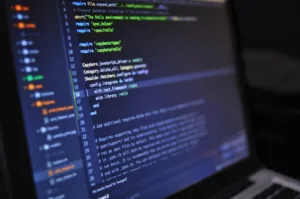Ransomware attacks continue to be a significant threat to organizations worldwide, but many of these incidents can be prevented by implementing basic security measures. According to the Ransomware Jaarbeeld 2024 (Ransomware Annual Report 2024), cybercriminals have not significantly changed their tactics, making it easier for organizations to defend against them with fundamental cybersecurity practices like patch management and multifactor authentication (MFA).
Key Takeaways
- Tactics Remain Unchanged: Cybercriminals still rely on software vulnerabilities and account takeovers.
- Preventable Attacks: Many ransomware incidents could be avoided with basic security measures.
- Patch Management: Properly configured patch management is one of the five critical measures.
- Collaboration is Key: Reporting incidents to authorities aids in improving defenses and tracking cybercriminals.
- Project Melissa: International efforts like Project Melissa have disrupted botnets, reducing cybercrime.
The State of Ransomware in 2024
The Ransomware Jaarbeeld 2024 reveals that cybercriminals continue to exploit software vulnerabilities and compromised accounts to infiltrate networks. These tactics have remained largely unchanged, making it easier for organizations to defend against them if they adopt basic security measures. The report emphasizes that patch management is one of the five foundational practices that can significantly reduce the risk of ransomware attacks1.
Patch Management: A Critical Defense
Patch management involves regularly updating software to fix vulnerabilities that attackers exploit. According to the report, many organizations fail to implement this basic measure, leaving them exposed to attacks. For example, unpatched systems are often the entry point for ransomware gangs.
“The majority of ransomware incidents could be prevented if organizations applied basic security measures, such as patch management and multifactor authentication,” states the Ransomware Jaarbeeld 20242.
The Role of Multifactor Authentication (MFA)
MFA adds an extra layer of security by requiring users to verify their identity through multiple methods. This simple measure can prevent account takeovers, which are a common tactic used by ransomware attackers. The upcoming Cyberbeveiligingswet (Cbw) in 2025 will mandate MFA for critical infrastructure organizations, but businesses can start implementing it now to bolster their defenses3.
Relevance to Red Teams, Blue Teams, and SOC Analysts
For Red Teams, the findings underscore the importance of simulating attacks that exploit unpatched systems and weak authentication mechanisms. These simulations can help organizations identify gaps in their defenses.
Blue Teams and SOC Analysts should prioritize monitoring for unpatched systems and enforcing MFA across all accounts. The report highlights that many attacks could be detected and mitigated early if these basic measures were in place.
Collaboration and Reporting: A Path to Stronger Defenses
The report highlights the importance of collaboration between organizations and authorities. Reporting ransomware incidents to the Nationaal Cyber Security Centrum (NCSC) and law enforcement not only aids in tracking cybercriminals but also provides valuable data to improve security measures4.
International efforts like Project Melissa and Operation Endgame have already disrupted botnets that play a significant role in ransomware distribution. These initiatives demonstrate the power of global cooperation in combating cybercrime5.
A look back
The Ransomware Jaarbeeld 2024 serves as a wake-up call for organizations to implement basic security measures. While advanced defenses are important, many ransomware attacks can be prevented by focusing on the fundamentals: patch management, MFA, and collaboration.
For Red Teams, Blue Teams, and SOC Analysts, the report provides actionable insights to strengthen defenses and reduce the risk of ransomware. By automating patch checks, enforcing MFA, and reporting incidents, organizations can significantly improve their cybersecurity posture.
References
- Ransomware-aanvallen kunnen vaak voorkomen worden door invoering basis-beveiligingsmaatregelen. Nationaal Cyber Security Centrum. Retrieved 2025-02-17.
- Ransomware-aanvallen kunnen vaak voorkomen worden door invoering basis-beveiligingsmaatregelen. Pont Media. Retrieved 2025-02-17.
- Ransomware aanvallen kunnen vaak voorkomen worden door invoering basis-beveiligingsmaatregelen. IB-P. Retrieved 2025-03-01.
- Ransomware-aanvallen kunnen vaak voorkomen worden. Emerce. Retrieved 2025-02-17.
- Driebergen – Ransomware-aanvallen kunnen vaak voorkomen worden door invoering basis-beveiligingsmaatregelen. Headliner. Retrieved 2025-02-20.





